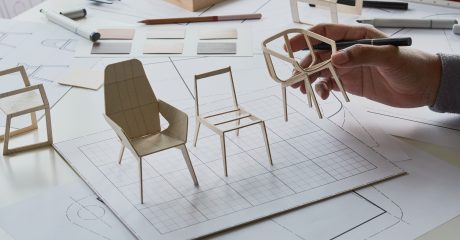Having a prototype is one thing, but turning it into an actual product for use can be overwhelming. This is why many products built to test a concept or process die without seeing the light of day. So, how do you move from prototype to production? In this article, we will provide great information on how to go from prototype to production, the steps, the strategies involved, and other important things to help you achieve it successfully.
Create a Great Prototype
If you are looking to turn your amazing idea into a product, then creating a prototype is the first step in the right direction. Here are different ways you can develop a prototype.
Conceptual Prototyping – Conceptual prototyping involves communicating your ideas and exploring concepts that match your idea and it is one of the cheapest prototyping methods. With this communication, it becomes easier to identify the basic requirements for its production, its key features, and the challenges you may likely encounter. With conceptual prototyping, you can use a Styrofoam cutting or sketching to showcase and communicate your idea.
Feature Prototyping – Feature prototyping involves developing the prototype for parts of a system to collect information on its workings and functionality requirements. This type of prototyping also helps collect information on the limitations on constraints of the developed parts of the entire system. It is important to note that this type of prototyping is ideal for use when developing parts of a mechanical system or electrical system.
Evolutionary Prototyping – You use evolutionary prototyping when a working prototype needs further analysis and modification. Variables up for modification with this type of prototyping include performance, cost, and availability of materials. More importantly, this type of prototyping is often continuous as the initial design keeps getting tested and evaluated until high-volume production and launching.
Research & Testing
Now you have your prototype. Before production, you must test its demand and acceptability level. So how do you do this?
Tooling, Sampling & Non-Production Release – Tooling is the process that converts the prototype to a physical sample with different replications. The sampling here aims to assess the product, its performance, and functionality, and to make any required changes before multiple productions.
Ensure the Prototype is Good for Mass Production – After the development process of the prototype, there could be modifications to improve quality and eliminate flaws. Eliminating flaws in the prototype stage would help save time and cost of production in the long run.
Take Your Product From Prototype to Low Volume Production
After designing the prototype, and ensuring it meets all the right standards from form and function, to aesthetics and fit, it is time to proceed to low-volume production. Low-volume production often entails manufacturing products in small batches ranging from 50 to a couple of hundred to meet market demand. Also, depending on the project, low-volume production is a stepping stone to high-volume production.
Ideal Lead Time
The lead time is often very short if you outsource your production to a manufacturer from the design and prototype phase to the manufacturing phase. However, the lead time is considerably longer if you contract the manufacturer after developing your prototyping. The reason is that the manufacturer would need to create 3D design models. Another reason for the increment in lead time is that engineers working with that manufacturing firm would have to undergo training on making and testing the components of your prototype.
Total Manufacturing Budget
Your manufacturing budget largely determines how fast your product moves from prototyping to low-volume production. With a substantial budget, low-volume production is often seamless, as you provide the manufacturers with enough resources to design, create molds and use the right materials for your project. On the other hand, in a situation where the manufacturing budget is below optimum, production takes a longer time.
Launch Product
After the low-volume production, which is often a pilot production run, your product is now ready for launch. However, you should note that after the product launch, those in charge of quality control should test the first samples against the quality procedure. The aim is to ensure no drop in product quality after the product launch.
Custom Tool’s Services
When you need a custom tool, you need a partner who can meet you more than halfway, whether you’re developing a new tool or looking for a way to manage your existing inventory. Customers trust us to meet this need for three main reasons: experience, quality and fast delivery! Contact us today for more information.
